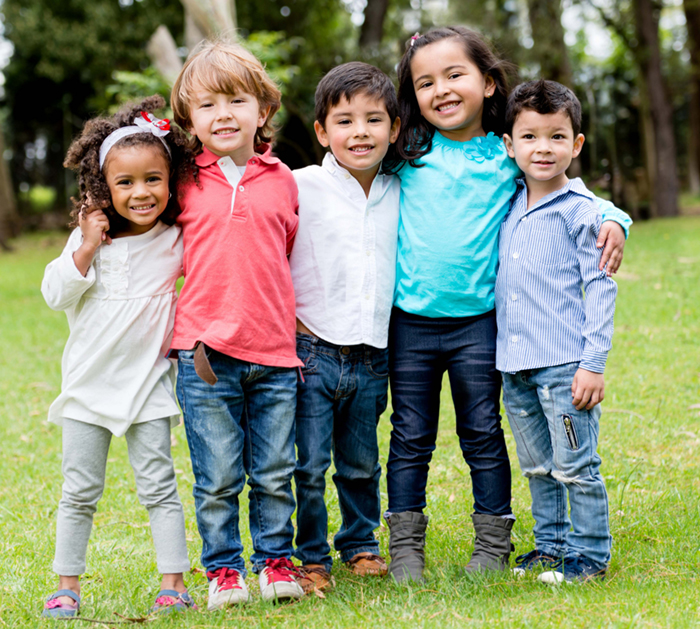Op-Ed: Be 'Color-Brave' With Your Kids
IPR faculty argue avoiding discussions with children about race is costly
Get all our news

IPR faculty argue we should not shield children, but teach them to be 'color-brave.'
In his farewell address on Tuesday evening, President Barack Obama appealed eloquently to the power of hope to overcome the lingering racial divisions that threaten our democracy. Just a few hours earlier, Dylann Roof, an avowed white nationalist, was sentenced to death for the willful murder of nine black parishioners at the Emanuel African Methodist Episcopal Church. And a month before that, when Trump became president-elect, a 7-year-old child asked her mother if slavery was coming back because, "Donald Trump really hates black people, and if a lot of people voted for him, then that means a lot of people might hate black people."
Although racial intolerance is no stranger to our nation, recent months have witnessed a precipitous surge in overt racial, ethnic, and religious intolerance. This startling uptick in hate crimes and hate speech, whether we have experienced them firsthand or learned about them from others, can shake even the most hopeful among us.
And make no mistake, none of this is lost on America's children; they are watching, listening and struggle to understand.
As parents and educators, perhaps our first and strongest impulse is to shield children from this scorching rhetoric. But as developmental and social psychologists, we advocate taking a different path. Instead, it is crucial that we engage in more, and more honest, conversation about race and ethnicity with our children.
More provocatively, we propose engaging in conversations of a different kind, conversations that instill in our children the power to be "color-brave." This term, coined by Mellody Hobson, means talking openly about the role of race and racism.
Research in social and developmental psychology tells us that children are not blind to race. Even before infants take their first wobbly steps, they notice distinctions among people, like those based on skin tone. These distinctions may be hazy at first, but they carry weight: Four-year-old children use race, ethnicity, and native language to anticipate about how someone they have yet to meet will behave and whether they'd like to become friends.
When young children ask questions, we generally try to answer them. Yet when they ask about race ("Mommy, why is that man brown?"), we often hush them.
Is it any surprise, then, that children—especially white children—learn to shy away from mentioning race? In one clever experiment, children were invited to play a "Guess Who?"-inspired game. An experimenter presented children, most of whom were white, with pictures of many different faces. Half of the faces in the array were of black individuals and the others were of white individuals. Beyond race, the faces differed in all sorts of ways, including gender, hair color, and so on. The experimenter selected one face and invited children to guess which it was. The challenge was to ask as few "yes-no" questions ("Is the person wearing a hat?") as possible. Notice that asking about race ("Is the person black or white)?") would immediately eliminate half of the possibilities. Eight-year-olds seized on this strategy, but 10-year-olds did not. Instead, they avoided race, although they knew this might cost them the game. And children who censured themselves in this way reported that they were more uncomfortable playing the game than children who did not.
Yes, for children and adults alike, talking about race is often uncomfortable. But not talking about race—when it is relevant and, thus, reasonable to do so—also comes at a cost. Remaining silent tells our children, either in our words or actions, that race does not matter. It permits the rhetoric of others – snippets overheard in the news, the cafeteria, or on the playground—to find a toehold in their hearts and minds as they struggle to make sense of racial, ethnic, and religious difference.
The path forward is clear. We must be color-brave—bold, intentional, and deliberate in discussing race with our children.
But how do we engage children's questions and their fears, when we don't have all the answers? We can begin by listening to them, and by taking advantage of excellent resources designed to guide educators and parents alike in these conversations.
Let's offer our children the messy truth—all people are created equal, but all people are not treated as equals. Race still matters and racism still exists. Rather than shielding children, let's teach them to be color-brave.
Sandra Waxman is Lewis W. Menk Professor of Psychology and an IPR fellow. Onnie Rogers is assistant professor of psychology and an IPR fellow. Jennifer Richeson is IPR faculty adjunct and the Philip R. Allen Professor of Psychology at Yale University.
This op-ed was originally published by U.S. News & World Report.
Photo: USDA on Flickr.
Published: January 25, 2017.